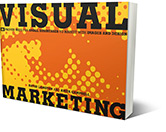“You can’t run your gala like a party, you must run it like a business.”
The summer — when you’re not in the thick of things — is an opportunity to look at trends with clients and within the industry. It’s a time for more strategic conversations. For example, you can consider what it means to honor a Board member. How did you tap into their network? What can we learn from that? What does it take to get someone to open their Rolodex?
Most galas and fundraising events happen in the Spring or the Fall, so I wondered what do event planners do when they’re not doing events? The obvious answer is “planning.” Fall events are already in full swing by the summer months and planning for the spring has already started. It’s also a good time for some self-reflection. I spoke to three event planners to get some insights on how to make events better and more effective.
Christine Madden of C. Madden Productions, an event development and management company, emphasized that your events must ultimately be about fundraising. “You can’t run your gala like a party, you must run it like a business.”
Christine Scerra, director of special events at The Alzheimer Drug Discovery Foundation advises, “Don’t just repeat and rinse. Even if it worked — it can still be better. Whether it’s the design of the event, the speakers, or the venue layout, there has to be something that changes each year.”
And, Tracie Basch from Basch Productions, LLC., says, “Should we do this every year, or was this successful because we only did it once? The most feared phrase is, ‘That is the way we’ve always done it.’”
Here are five insights that you can use on your next event:
1. Paper invitations are still important.
The physical invitation instills an importance that digital versions can’t match. People still save them and post them on the fridge. The invitations are simpler with links to more details online, the RSVP card and return envelope are out. Chris Madden says that QR codes can drive traffic to online reservations and your donation platforms. The most effective method is to produce your invitations as online and in print.
2. The power of the event program.
Should we print anything or go all virtual? How do you justify printing when most people leave their program behind? Yet, you may be eliminating a money-making program that can be an effective way to connect with key supporters with tributes, ads, and sponsors. Tracie Basch recommends that you print a small 12-16 page program that may be on the tables and include speaker bios, mission, donors, and event volunteers. Include sponsors' ads on the inside front and back covers, and the back cover. “Put everything else in the slides,” Tracie says, “Your Program should be a mission-driven document.” There are long-term benefits to a printed program, especially for dedicated volunteers and donors who appreciate recognition for their contributions. Chris Madden adds, “Even three months later, people still call me and ask for copies or make comments on the programs.”
3. Play more attention to the slides.
Instead of creating a PDF that gets converted to slides, consider doing it the other way around and build your slideshow first, then convert that to the PDF for the virtual record. People do not read the “online” versions but they do see the ads and sponsors on screen—often they take selfies when their ad comes on the screen.
4. Use tech, use QR codes.
“We’re at a crossroad. There’s a shift in generational giving,” says Chris Madden. “Young people are all-in on digital giving, yet older donors still prefer traditional methods. The important thing is that people haven’t stopped giving. New platforms offer ease of giving that was never available before.”
Be sure your event staff is well-versed in the software and can facilitate quick fixes for online and text donations while the event is in progress.
Consider using iPads on the tables to display the bios, sponsors, and related content during your live event. You can use technology to enhance the event experience by creating a “second screen” that mirrors the live event. It may include easy-to-donate tools, videos, and website links that may be controlled by the event coordinators. This is not less expensive than printing programs, but it is interactive, informative, and more engaging.
5. The Step and Repeat sensation.
People love to mark the occasion with a selfie against the backdrop. “They line up at many events,” says Christine Scerra. The Step and Repeat (or photo backdrops with multiple logos) are really popular. Chris Madden recalls, that at one high-end event they did something quite clever, they created a really long photo backdrop. At one end were photographers with the celebrity guests being photographed and at the other was an area for any guest who wanted to take selfies. Guests who were excited to be dressed up at an event were lining up to take selfies while the flash and excitement of the celebrity photos were happening along the same wall. “It was as if they were taking pictures together.” All of this is good for the post-event promotions on social media.
Remember the mission and purpose of your event.
Tracie Basch says, “I got my start doing the auction at my kid’s school.” When Tracie’s 18-year-old was only 5 years old, he heard from his friends and teachers that she was at the school event, and he told his mother, “I heard you were at the school party with my teacher last night!” Tracie said, “’Mommy was not at that party, we made that party happen and raised lots of money for your school.’ His eyes went wide in realization. My kids know why I do what I do and I always remember this conversation as it keeps me focused on the mission.”
You always have to grow and change. You can’t rely on what you’ve always done. The summer is a golden opportunity to look at what you’ve done, to look at your business, yourself, and your clients. Whatever you do, it’s not just event-planning, what you do impacts many unknowable people. It’s important that you share the reasons why you are fundraising and demonstrate how your work supports the mission.
Back to Insights




